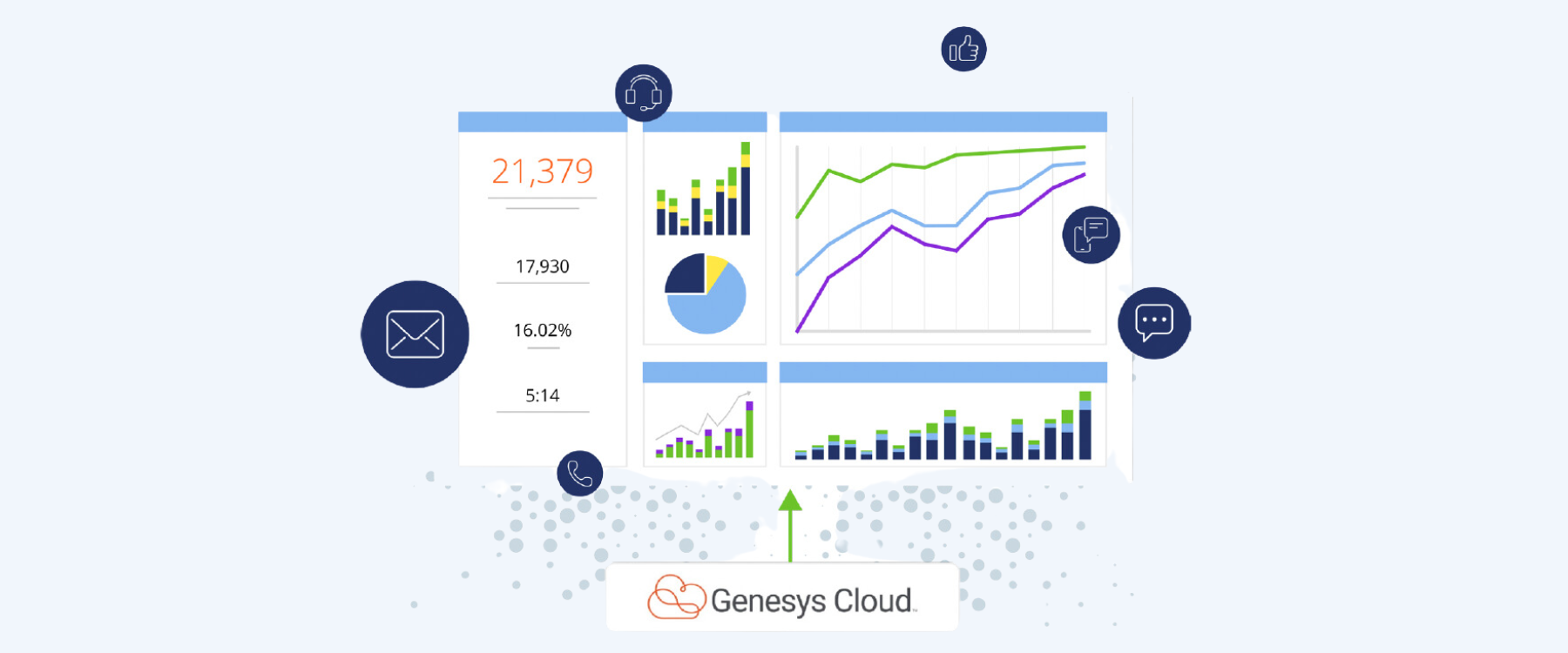As a contact center manager or team leader, you’ve likely found yourself in a familiar situation: a handful of agents are on their scheduled lunches, and suddenly, your website encounters an issue, leading to a surge in incoming calls.
Despite the best efforts of the active agents, calls are being abandoned, and wait times are on the rise. The stress is palpable, and you recognize the potential downstream consequences of this situation.
Ideally, you’d have access to a real-time analytics tool that alerts you at the first sign of increased call volume, allowing you to swiftly make adjustments—perhaps redistributing resources from email queues to support your agents.
Real-time analytics provide a visual representation of what is happening in your contact center, enabling on-the-fly adjustments to benefit your agents, customers, and overall business.
With analytics, they can be “on demand” or continuous. On-demand analytics involve data retrieved when requested from various sources. Real-time data keeps users informed as events unfold and can even be programmed to take specific actions automatically in response to unfolding events. In our scenario, real-time analytics could notify call center managers if call hold times or abandonment rates deviate from specified ideal parameters.
So, what exactly is real-time analytics, and what benefits does it offer call center teams? Let’s delve deeper into these questions.

What Are Real-Time Analytics?
Real-time analytics offer a dynamic approach to monitoring and measuring data as it unfolds, providing a live perspective on the activities within your call or contact center. This “up to the second” data is pivotal, enabling organizations to make quick and strategic decisions based on current information, rather than reacting to past occurrences.
Understanding Real-Time Analytics
Real-time analytics encompass both the technology and processes that facilitate agile decision-making. The value lies in the speed, adaptability, and actionable insights gained, allowing organizations to make critical decisions promptly. Let’s explore 3 key benefits of real-time analytics:
1. Make Tactical Decisions Quickly
Swift assessment of contact center operations is crucial when time is of the essence. Tools like Brightmetrics provide easily customizable templates, enabling the setting of threshold alerts for Service Level Agreements (SLAs) and Key Performance Indicators (KPIs). Instant knowledge of areas requiring attention empowers teams to act promptly and efficiently.
2. Transparency
Real-time data promotes transparency within the team. Agents can measure their performance as it happens, fostering a sense of ownership and accountability. Monitoring calls in the queue ensures everyone is aware of workflows, allowing for proactive adjustments. For instance, a backup in calls may prompt the team to share help desk articles instead of guiding through solutions step by step.
3. A Fuller Picture
Real-time analytics complement historical analysis by providing a comprehensive view of operations. This combination helps executives and stakeholders in gaining insights into intra-daily operations, offering easily digestible data visualizations and valuable customer experience insights.
Real-Time Analytics Use Cases and Examples
Real-time analytics find application in various scenarios:
- Data Visualizations: Reflect changes within the business as they occur, eliminating data latency.
- Competitive Advantages: Easy decision-making based on benchmarks and trends.
- Measuring What Matters: Focus on outcomes to save time, money, and resources.
- Testing Things Out: Experiment with changes in a controlled environment to gauge impact.
- Customer Feedback: Dive deep into customer feedback and behavior in real-time.
- Bottomline Management: Achieve cost savings by optimizing processes and lowering operational costs.
- Improved Decision Making: In-the-moment data improves the ability to make real-time decisions.
Take the Lead With Real-Time Analytics In Your Contact Center
While historical data analysis is a contact center necessity, real-time data is equally crucial. Call center managers can confidently take quick action with real-time overviews, adapting to customer needs efficiently. Real-time insights help optimize team functionality, improve customer response times, and adapt to specific customer behavior critical to your business.
Embracing real-time analytics in your contact center is not just an option; it’s a strategic imperative for staying ahead in today’s fast-paced business environment.
Brightmetrics REAL TIME Analytics™ Tool
Brightmetrics REAL TIME Analytics provides a second-by-second perspective, empowering contact center managers and team leaders to make quick decisions for delivering exceptional customer experiences.
- With real-time views of customers in queue, agents’ status, average queue time, and more, you can take immediate action.
- Contact center data alerts you to surges in volume as they occur, enabling proactive issue resolution.
- Customizable dashboards and reports cater to the specific Service Level Agreements (SLAs) and Key Performance Indicators (KPIs) crucial to your contact center.
- REAL TIME Analytics allows all contact center teams to monitor calls on their own devices, fostering adaptability to meet evolving customer needs.
Watch Our REAL TIME Analytics Dashboards In Action
Final Points On Real-Time Analytics
An increasing number of companies recognize the value of redefining their approach to business intelligence and are actively seeking the ideal analytics service to cater to their growing needs. In a world that operates in real time, characterized by constant connectivity and mobility, companies are striving to align with their customers’ immediate requirements to enhance decision-making.
Real-time analytics emerge as a vital tool, offering a complete view of daily operations alongside traditional historical data analysis. While historical analysis remains important, an exclusive reliance on it can significantly affect a company’s competitiveness, understanding of customer trends, and responsiveness to market changes.
The applications of real-time data analytics are diverse, benefiting virtually every type of business. This is clear when considering best practices for operating a contact center. Monitoring organizational performance to identify bottlenecks, implement process improvements, and oversee team management becomes not just a strategy but a necessity. Stay ahead by embracing the power of real-time data analytics in optimizing your business operations.




